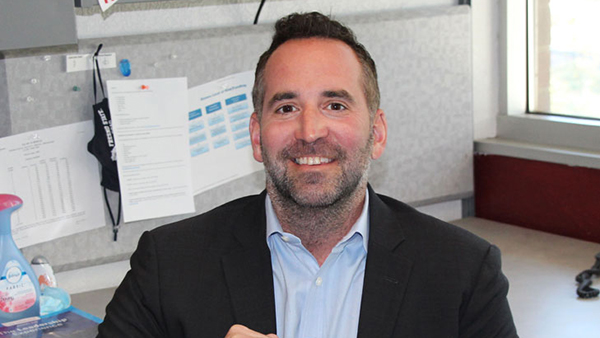|
Dr. Jonathan Biggane is an associate professor in the Department of Management. His research interests are focused on intra-organizational relationships, with a particular emphasis on employee retention, employee well-being and organizational change and turnover. He is also the author of "Resiliently Happy: A Guide to Building Resilience and Finding Happiness," which was published in February 2023. Campus News asked Biggane to share some insight on how to be happier.
What are some common signs that someone may need to work on improving their happiness?
It’s important to note that while my research on employee well-being draws heavily from psychology, I’m not a psychologist so I’m not really in a position to determine if someone else needs to work on their happiness. I can say from the research I’ve done and from the thousands of articles written on this topic, most of us would benefit from a little more happiness in our lives. Aristotle wrote that happiness is the only thing that is desired for its own sake.
If we stop to think about it, almost everything we do is in pursuit of happiness, either ours or those we love. It’s an important part of the human experience; in fact, the average American thinks about happiness at least once every day, rating it as one of the most important pursuits of life. Based on the latest World Happiness Report, the U.S. is only the 15th happiest country, despite having the world’s largest economy and nearly all of us having access to vital resources like clean water and food. Based on these data, it seems that we can do better in terms of happiness.
Are there specific mindfulness or relaxation exercises you recommend?
Absolutely. I use Headspace every day, which is a great meditation app that teaches you the basics and walks you through different breathing techniques. I tend to like meditation techniques that focus on taking longer exhales than inhales. Doing so activates the parasympathetic part of your autonomic nervous systems, which slows your heart rate, reduces blood pressure, and tells your brain that it can relax.
One of my colleagues, Dr. Chris Sterling, recently completed a sabbatical where he spent months training in different mindfulness techniques. He’s looking at ways to incorporate mindfulness into the business school, so he would be a great resource on this topic.
How do you create a healthy work-life balance to support your happiness?
About 70% of Americans hate their jobs or have “mentally checked out.” Most of the time when we talk about work-life balance, it’s about how I can spend less time going to a job that I hate. The reality is that work can be a great source of happiness when we’re using our strengths to accomplish something that gives us a sense of meaning and purpose. That’s not to suggest that Americans aren’t overworked. According to the Bureau of Labor Statistics, Americans work 173 hours more per year than in 1980, and 40% are now working more than 50 hours per week. Americans also receive 20 fewer vacation days and work 258 hours more than the average European.
Finding a job you love and setting boundaries is key to creating a healthy work-life balance. Allocate your time wisely and prioritize important aspects of life like relationships and self-care. Avoid checking work emails outside of work hours if possible.
Are there specific activities or hobbies that can contribute to a happier life?
I have a list of activities at the end of each chapter in my book, “The Happiest People,” which have been empirically shown to improve happiness. I also have a free activity guide for my new book, “Resiliently Happy,” which is focused on increasing resilience and happiness.
UC Berkeley’s Greater Good Institute also has a lot of great activities for improving well-being. One of my favorites is writing down three new things I’m grateful for as soon as I wake up in the morning. It’s easy at first, but once you get past family, friends, food, etc., it becomes harder. This activity trains your brain to think more positively.
How can people challenge negative thought patterns or habits that may be affecting their ability to be happy?
Most of us see situations and think about the worst-case scenario rather than the most likely scenario. There’s a great exercise that Dr. Martin Seligman uses with the U.S. Military to combat this. Just follow these steps:
1) Describe the problem or threat.
2) Describe your worst-case scenario thoughts, and then ask yourself “What happens next?”; “And then what?”
3) Identify and write down the most likely scenario. How were your worst case thoughts different from the most likely outcome? See if you can identify a pattern of when or under what circumstances you tend to catastrophize so that you can be more aware of it in the future.
4) Develop a plan for dealing with the most likely outcomes. When you put things into perspective and create a plan for the most likely outcomes, you’ll likely start feeling some relief in knowing that: (a) you may have been engaging in catastrophic thinking and (b) you can deal with whatever comes your way.
Can you share a personal mantra or guiding principle that helps you stay focused on your happiness?
Be grateful and keep going. Viktor Frankyl, a psychiatrist and Holocaust survivor wrote, “When we are no longer able to change a situation, we are challenged to change ourselves.” It’s not what happens to us in life that determines our happiness, but how we respond to it.
|


